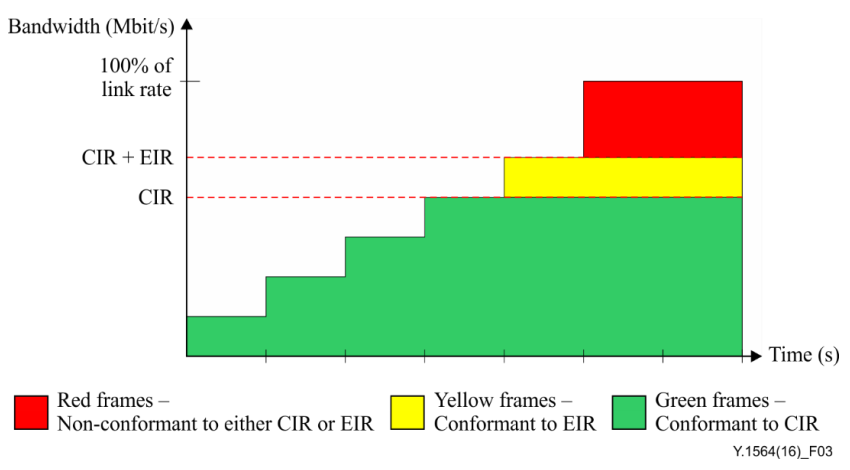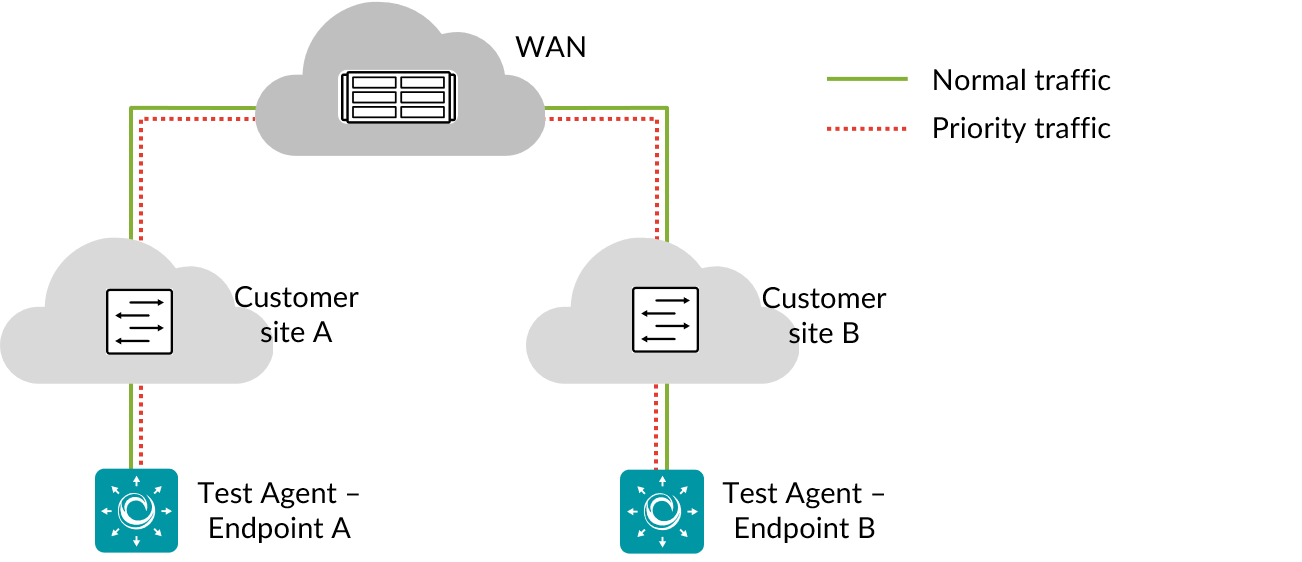Introduction to Ethernet service activation testing¶
The purpose of Ethernet service activation tests is to validate carrier- or enterprise-grade Ethernet services according to ► ITU-T Recommendation Y.1564 as well as ► Metro Ethernet Forum technical specifications.
These tests go further than ► IETF RFC 2544, a benchmarking methodology for hubs, switches, and routers. Together, the tests constitute an out-of-service test methodology for assessing the configuration and performance of an Ethernet service prior to customer notification and delivery.
Compliance with ITU-T Y.1564¶
Routing Active Testing is compliant with ITU-T Recommendation Y.1564, “Ethernet Service Activation Test Methodology” (color-aware and non-color-aware), in verifying that the Ethernet connection complies with service acceptance criteria (frame loss ratio, frame delay, frame delay variation, Ethernet availability) for your Ethernet services, and that the Quality of Service (QoS) profile is correctly configured.
In particular, the Routing Active Testing tests verify that the traffic policing based on the concepts of Committed Information Rate (CIR) and Excess Information Rate (EIR) works as expected for colored as well as non-colored flows. The picture below, taken from the Y.1564 specification, illustrates the relationship between CIR, EIR, and the color coding of traffic.

The description of the task type for each test has a reference to the corresponding identification in ITU-T Y.1564.
To fully comply with ITU-T Y.1564 as well as ► Y.1563 (“Ethernet Frame Transfer and Availability Performance”), the Ethernet service activation tests must be complemented with TCP/UDP performance tests. These send and receive multiple TCP sessions and UDP flows with differentiated QoS settings to make sure that packet loss, jitter, and maximum one-way delay are within your service acceptance criteria and meet your service availability requirements.
Therefore, for a full validation of an Ethernet-based service, first confirm that the service is correctly configured by running the Ethernet service activation tests, and then validate the quality of the services as delivered to the end-user by means of the TCP/UDP performance tests.
Compliance with MEF Carrier Ethernet 2.0¶
Routing Active Testing is also compliant with Metro Ethernet Forum Carrier Ethernet (CE) 2.0 services certification (E-Line, E-LAN, E-Tree, and E-Access).
Physical test setup¶
For Ethernet service activation tests, you need to install and register at least two Test Agents (acting as sender and receiver) and connect them to a switch or router port in your network. If you want to test more connections, you need to create separate tests for each connection.

Two interfaces are used on the Test Agents: one interface on each Test Agent is used as test interface, and the other (“eth0”) is used for management, maintaining an encrypted connection to the Routing Active Testing server. The management interface cannot be used for testing.
All tests are very fast to run, and they are suitable both for lab setups and for verifying Ethernet services end-to-end in a live network.
Ethernet service activation tests are supported for IPv4 only.
Further reading¶
For details on individual tasks handling Ethernet service activation tests, see the following pages: